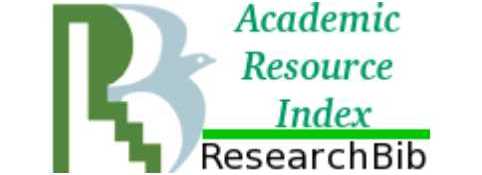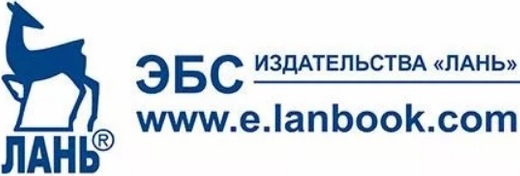Break-even management: the concept of the full break-even point model
The study is theoretical, since it is based on the theory of break-even analysis and assumes further systematization and clarification of models of different indicators of enterprise break-even management. The proposed concept is applicable to the micro level of relatively commercial organizations in different sectors of the economy. Cash, accounting (classical) and financial break-even points are not alternatives, they complement each other and make sense only in the general system of simultaneous accounting and analysis of all three indicators. The concepts of different break-even points (profitability thresholds) are conditional and derived from the classical break-even point due to the need to compare the corresponding indicators with each other. At the same time, the operational and financial break-even points (profitability thresholds) can be considered as accounting ones, since they are based on explicit accounting costs. The relevance of calculating these indicators increases in times of crisis, when prices and sales volumes decrease, and inflation and the key rate of the Bank of Russia increase. More precisely, they can be identified as indicators of the scale of activity and break-even management of the enterprise. They are united by their dependence on the scale of activity (production volume). The concept of the full breakeven point is proposed, with a clarification of the formula and place in the general system of indicators of enterprise break-even management. As of March 2025, this model proposes to use a target value of return on equity of 20%. The concept of the full breakeven point assumes that in addition to explicit accounting costs, implicit ones are also taken into account – losses from inflation and lost profits from the possibility of using capital in an alternative way. In the short term, the volume of the enterprise's activity should not be lower than the cash break-even point, in the medium term – not lower than the accounting point, in the long term – exceed the full breakeven point. Achieving excess of the "full break-even point" should be the key goal of the top managers of the enterprise in order to exclude the prerequisites for its owners to exit the business.
Morgachev, I.V., Nesterc, O.N., Dosova, A.G., Chebotareva, E.N. (2025), “Break-even management: the concept of the full break-even point model”, Research Re-sult. Business and Service Technologies, 11 (2), pp. 96-106
















While nobody left any comments to this publication.
You can be first.
Agafonova, N.P., Markova, A.D. and Savelyeva, V.A. (2024), “Analysis of the Break-Even Point in Agricultural Organizations of the Krasnodar Territory”, Bulletin of the Academy of Knowledge, 4 (63), pp. 24-27.
Al-Hawatmah, Z. and Shaban, O.S. (2023), “The effect of financial leverage on company’s capital structure: Evidence from developing market”, Corporate & Business Strategy Review, 4 (2), pp. 168–174. https://doi.org/10.22495/cbsrv4i2art15/
Anagnostopoulou, S.C. and Tsekrekos, A.E. (2017), “The effect of financial leverage on real and accrual-based earnings management”, Accounting and Business Research, 47 (2), pp. 191-236. doi: https://doi.org/10.1080/00014788.2016.1204217
Cherevan, E.I. and Yudina, O.V. (2020), “Determination of the Break-even, Financial Leverage and Stock of Financial Strength as an Assessment of the Financial Stability of the Enterprise”, Bulletin of the Tula Branch of the Financial University, 1, pp. 258-260.
Gorodetskaya, O.Yu. and Gobareva, Y.L (2021), “Method for Evaluating the Breakthrough Point According to the Data of the Financial Results Report”, RISK: Resources, Information, Supply, Competition, 2, pp. 114-118.
Khabirov, G.A., Nigmatullina, G.R., Salimova, G.A. and Galeev, A.F. (2023), “Diagnostics and Management of Financial Stability of Organizations”, Economy of agricultural and processing enterprises, 8, pp. 55-60. DOI 10.31442/0235-2494-2023-0-8-55-60.
Morgachev, I.V., Chugai, D.Iu., Lebed, A.V. and Bystrova, T.S. (2024), “Assessment of Management of Borrowed Funds of Agricultural Holdings in Russia”, AIC: Economics, Management, 3, pp. 46-55. DOI 10.33305/243-46.
Morhachov, I.V. (2023), “Financial Break-Even Point and Indicator of Devaluation of Own Capital of Agro-Industrial Complex Enterprises. Bulletin of Volgograd State University”, Economics, Vol. 25, 2, pp. 131-141. DOI 10.15688/ek.jvolsu.2023.2.11.
Nazarova, V.V. and Glebov, S.P. (2018), “The Relationship Between Management of Floating Capital and Performance of the Company”, Finance: Theory and Practice, Vol. 22, 4 (106), pp. 114-129. DOI 10.26794/2587-5671-2018-22-4-114-129.
Smirnova, L.I., Volkova, A.V. and Ryndina, O.S. (2022), “Analysis of the Break-Even Point of Agricultural Production”, Bulletin of the Academy of Knowledge, 50 (3), pp. 302-306.
Trach, D.M. (2023), “Financial Sustainability Management”, AIC, Economics, Management, 2, pp. 24-30. DOI 10.33305/231-24.